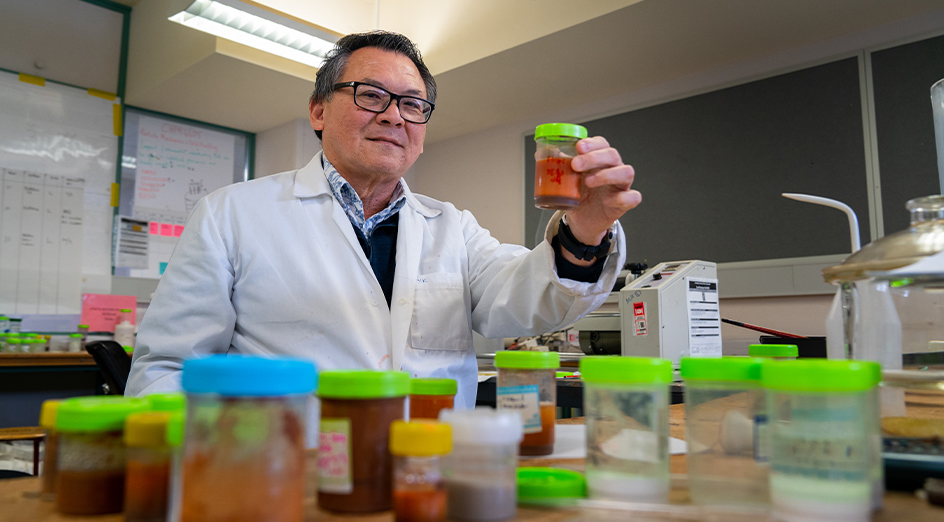Researchers at The University of Western Australia have developed a new chemical additive that increases iron ore yield while reducing costs and the environmental effect of mining waste.
Chemical engineer Professor Yee-Kwong Leong from UWA’s School of Engineering said the patented compositechemical additive would reduce the impact of tailings, which are unwanted mining by-products that go to waste during processing.

“Some iron ore processing plants in the Pilbara experience issues separating valuable iron ore from undesired materials in wet processing situations,” Professor Leong said.
"We have demonstrated a more efficient way of extracting iron ore from waste, which will reduce material thrown away in tailings dams and save millions of dollars per year."
Professor Yee-Kwong Leong
“When separating the iron ore from the waste becomes too difficult, mining companies will dispose of the tailings in a dam.”
The chemical additive is added to slurry – a semi-liquid mixture that contains valuable iron particles suspended in water – and works by separating the iron ore from impurities in the slurry.
“Our chemical additive helps remove sticky impurities from the material and turn the iron-rich product into a non-cohesive powder,” Professor Leong said.
“The resulting product, which contains coarse impurities is easier to treat using a normal iron ore extraction process, such as high intensity magnetic separation.”
According to Professor Leong, the UWA developed chemical additive could improve iron yield in wet processing situations by three to seven per cent which will enable the iron concentration of slurry to be increased to 58 per cent – the minimum required for sale.
“We have demonstrated a more efficient way of extracting iron ore from waste, which will reduce material thrown away in tailings dams and save millions of dollars per year,” he said.
“The chemical additive was developed in response to a growing problem of waste tailings being too fine and difficult to handle and too much water being used.”
The additive can reduce the viscosity – or thickness – of tailings by up to 95 per cent.
“This bottleneck, caused by high viscosity tailings, reduces the output of the plant and is amplified when there is significant distance between the processing plant and the tailings dam.”
Professor Leong was also able to improve the safety of storing tailings in the dam by developing an affordable additive that causes tailings to become paste-like in consistency.
For the newly developed chemical additive to be used in industry, it will be required to undergo a safety and environmental management evaluation.
Media references
Nicholas Smith, UWA Media Officer, 08 6488 1888 / 0411 644 492
